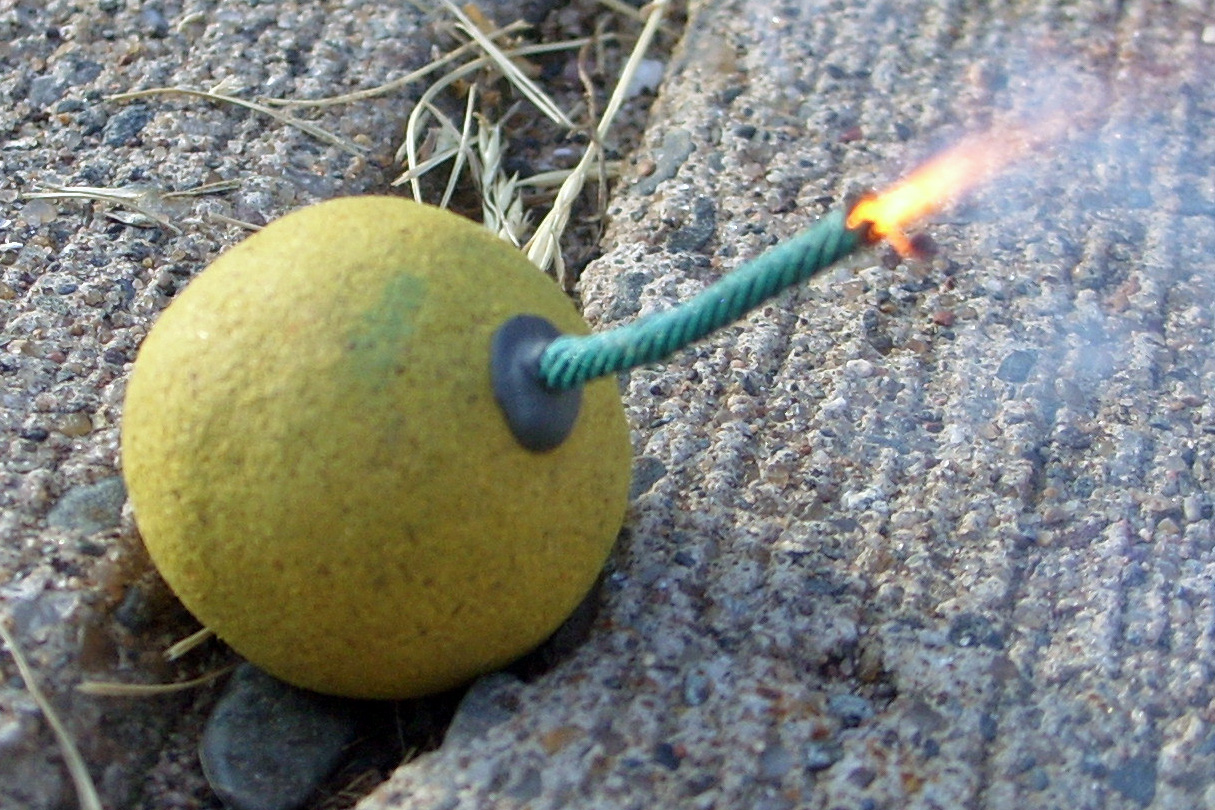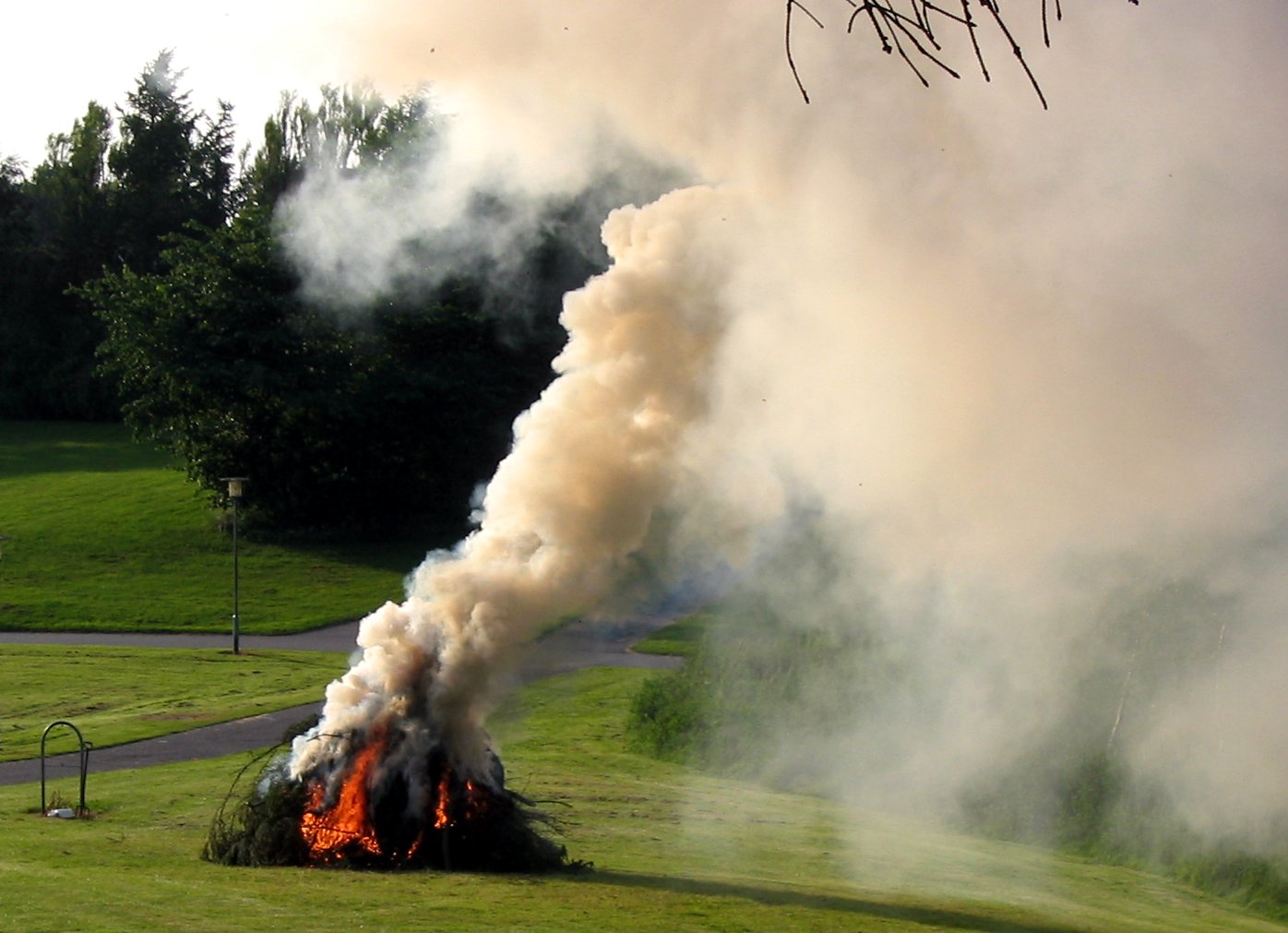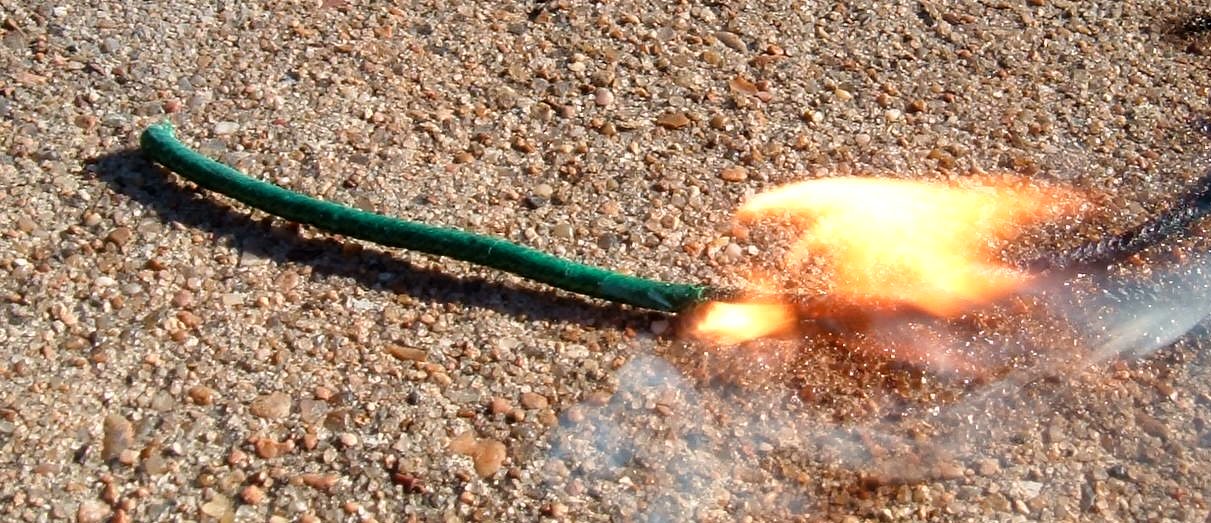|
Fuse (explosives)
In an explosive, pyrotechnics, pyrotechnic device, or military munition, a fuse (or fuze) is the part of the device that initiates function. In common usage, the word fuse is used indiscriminately. However, when being specific (and in particular in a military context), the term ''fuse'' describes a simple pyrotechnic initiating device, like the cord on a firecracker whereas the term ''fuze'' is used when referring to a more sophisticated ignition device incorporating mechanical and/or electronics, electronic components, such as a proximity fuze for an M107 projectile, M107 artillery shell, magnetometer, magnetic or acoustic signature, acoustic fuze on a sea mine, spring-loaded grenade fuze, pencil detonator, or anti-handling device. History Documented evidence suggests that the earliest fuses were first used by the Song dynasty, Song Chinese between the 10th and 12th centuries. After the Chinese invented gunpowder, they began adapting its explosive properties for use in milit ... [...More Info...] [...Related Items...] OR: [Wikipedia] [Google] [Baidu] [Amazon] |
Smoke Bomb With Burning Fuse
Smoke is an aerosol (a suspension of airborne particulates and gases) emitted when a material undergoes combustion or pyrolysis, together with the quantity of air that is entrained or otherwise mixed into the mass. It is commonly an unwanted by-product of fires (including stoves, candles, internal combustion engines, oil lamps, and fireplaces), but may also be used for pest control (fumigation), communication (smoke signals), defensive and offensive capabilities in the military (smoke screen), cooking, or smoking (tobacco, cannabis, etc.). It is used in rituals where incense, sage, or resin is burned to produce a smell for spiritual or magical purposes. It can also be a flavoring agent and preservative. Smoke inhalation is the primary cause of death in victims of indoor fires. The smoke kills by a combination of thermal damage, poisoning and pulmonary irritation caused by carbon monoxide, hydrogen cyanide and other combustion products. Smoke is an aerosol (or mist) of solid ... [...More Info...] [...Related Items...] OR: [Wikipedia] [Google] [Baidu] [Amazon] |
Huolongjing Bomb
The ''Huolongjing'' (; Wade-Giles: ''Huo Lung Ching''; rendered in English as ''Fire Drake Manual'' or ''Fire Dragon Manual''), also known as ''Huoqitu'' (“Firearm Illustrations”), is a Chinese military treatise compiled and edited by Jiao Yu and Liu Bowen of the early Ming dynasty (1368–1683) during the 14th century. The ''Huolongjing'' is primarily based on the text known as ''Huolong Shenqi Tufa'' (''Illustrations of Divine Fire Dragon Engines''), which no longer exists. History The ''Huolongjings intended function was to serve as a guide to "fire weapons" involving gunpowder during the 1280s to 1350s. Its predecessor, the ''Huolong Shenqi Tufa'' (Fire-Drake Illustrated Technology of Magically (Efficacious) Weapons), has since been lost. The ''Huolongjing'' was one of three early Ming military treatises that were mentioned by Jiao Xu, but only the ''Huolongjing'' remains. Although the earliest edition of the ''Huolongjing'' was written by Jiao Yu, a Ming general, som ... [...More Info...] [...Related Items...] OR: [Wikipedia] [Google] [Baidu] [Amazon] |
Military
A military, also known collectively as armed forces, is a heavily armed, highly organized force primarily intended for warfare. Militaries are typically authorized and maintained by a sovereign state, with their members identifiable by a distinct military uniform. They may consist of one or more military branches such as an army, navy, air force, space force, marines, or coast guard. The main task of a military is usually defined as defence of their state and its interests against external armed threats. In broad usage, the terms "armed forces" and "military" are often synonymous, although in technical usage a distinction is sometimes made in which a country's armed forces may include other paramilitary forces such as armed police. Beyond warfare, the military may be employed in additional sanctioned and non-sanctioned functions within the state, including internal security threats, crowd control, promotion of political agendas, emergency services and reconstruct ... [...More Info...] [...Related Items...] OR: [Wikipedia] [Google] [Baidu] [Amazon] |
Mining
Mining is the Resource extraction, extraction of valuable geological materials and minerals from the surface of the Earth. Mining is required to obtain most materials that cannot be grown through agriculture, agricultural processes, or feasibly created Chemical synthesis, artificially in a laboratory or factory. Ores recovered by mining include Metal#Extraction, metals, coal, oil shale, gemstones, limestone, chalk mining, chalk, dimension stone, rock salt, potash, gravel, and clay. The ore must be a rock or mineral that contains valuable constituent, can be extracted or mined and sold for profit. Mining in a wider sense includes extraction of any non-renewable resource such as petroleum, natural gas, or even fossil water, water. Modern mining processes involve prospecting for ore bodies, analysis of the profit potential of a proposed mine, extraction of the desired materials, and final mine reclamation, reclamation or restoration of the land after the mine is closed. Mining ma ... [...More Info...] [...Related Items...] OR: [Wikipedia] [Google] [Baidu] [Amazon] |
Blasting Cap
A detonator is a device used to make an explosive or explosive device explode. Detonators come in a variety of types, depending on how they are initiated (chemically, mechanically, or electrically) and details of their inner working, which often involve several stages. Types of detonators include non-electric and electric. Non-electric detonators are typically stab or Pyrotechnics, pyrotechnic while electric are typically "hot wire" (low voltage), exploding bridge wire (high voltage) or explosive foil (very high voltage). The original electric detonators invented in 1875 independently by Julius Smith and Perry Gardiner used mercury fulminate as the primary explosive. Around the turn of the century performance was enhanced in the Smith-Gardiner blasting cap by the addition of 10-20% potassium chlorate. This compound was superseded by others: lead azide, lead styphnate, some aluminium, or other materials such as DDNP (diazo dinitro phenol) to reduce the amount of lead emitted in ... [...More Info...] [...Related Items...] OR: [Wikipedia] [Google] [Baidu] [Amazon] |
William Bickford (1774–1834)
William Bickford (1774–1834) was an English inventor, who, formerly a currier, invented the safety fuse for use in mining. Early life William Bickford was born in Ashburton, Devon, England, United Kingdom to William and Mary Bickford. He moved to first Truro and then Tuckingmill in Cornwall. Tuckingmill was then in the heart of the Cornish mining industry, and Bickford would have been aware of the large loss of life from explosive accidents in the mines. Inventor career He is best known as the inventor of the safety fuse, which was inspired by watching a friend, James Bray making rope. With his son-in-law George Smith, he established a factory in Tuckingmill for the production of his invention, and in its first year it produced 45 miles of fuse. He died a short while before his company actually started up. It took a while for miners to use the safety fuses, for the old ones were cheaper. His company eventually became part of the Ensign-Bickford Company. ''On the so ... [...More Info...] [...Related Items...] OR: [Wikipedia] [Google] [Baidu] [Amazon] |
Safety Fuse
The safety fuse is a type of fuse (explosive), fuse invented and patented by English inventor William Bickford (1774–1834), William Bickford in 1831. Originally it consisted of a "tube" of gunpowder surrounded by a waterproofed varnished jute "rope." It replaced earlier and less reliable methods of igniting gunpowder blasting charges which had caused many injuries and deaths in the mining industry. The safety fuse burns at a rate of typically about 30 seconds per foot (1 second per cm). History Documented evidence suggests that the earliest fuse (explosive), fuses were first used by the Chinese between the 10th and 12th centuries. After the Chinese had invented gunpowder, they began adapting its explosive properties for use in military technology. By 1044 they were using gunpowder in simple grenades, bombs, and flamethrowers. Gunpowder did not reach Europe until the early 13th century, carried over from China by Middle Eastern traders and merchants along the old Silk Road. For ... [...More Info...] [...Related Items...] OR: [Wikipedia] [Google] [Baidu] [Amazon] |
Visco Fuse
A visco fuse is a higher-quality fuse used for consumer fireworks. It is most commonly colored green, red, or pink and is found as a twisted, coated strand. It is also used to create delays in the firing of multiple firework displays for safety. Description Visco is a 3/32 - 1/8 inch (2–3 mm)-diameter cord with a black powder core. There are three external layers to visco fuse. First, a layer of string is wound around the core, then a second, less tight, layer of string is wound in the opposite direction to prevent unraveling. The last layer is a low-nitrate nitrocellulose lacquer that keeps the fuse from falling apart. The last layer helps to make the visco fuse water resistant and to prevent moisture from degrading the black powder core. Unlike dynamite safety fuse, visco fuse burns with a visible external flame. After ignition, most visco fuses can burn underwater. Variants * Cannon fuse is a visco fuse that is most often thicker, steadier burning, and often ext ... [...More Info...] [...Related Items...] OR: [Wikipedia] [Google] [Baidu] [Amazon] |
Fireworks
Fireworks are Explosive, low explosive Pyrotechnics, pyrotechnic devices used for aesthetic and entertainment purposes. They are most commonly used in fireworks displays (also called a fireworks show or pyrotechnics), combining a large number of devices in an outdoor setting. Such displays are the focal point of many cultural and religious Celebration (party), celebrations, though mismanagement could lead to List of fireworks accidents and incidents, fireworks accidents. Fireworks take many forms to produce four primary effects: noise, light, smoke, and floating materials (confetti most notably). They may be designed to burn with colored flames and sparks including red, orange, yellow, green, blue, purple and silver. They are generally classified by where they perform, either 'ground' or 'aerial'. Aerial fireworks may have their own Air propulsion, propulsion (skyrocket) or be shot into the air by a Mortar (weapon), mortar (aerial shell). Most fireworks consist of a paper or ... [...More Info...] [...Related Items...] OR: [Wikipedia] [Google] [Baidu] [Amazon] |
Thunder Crash Bomb
The thunder crash bomb (), also known as the heaven-shaking-thunder bomb, was one of the first bombs or hand grenades in the history of gunpowder warfare. It was developed in the 12th-13th century Song and Jin dynasties. Its shell was made of cast iron and filled with gunpowder. The length of the fuse could be adjusted according to the intended throwing distance. History Thunderclap bomb (''pilipao'') The ''zhentianlei'' (thunder-crash/heaven-shaking-thunder) bomb was not the first bomb. Gunpowder bombs had been mentioned since the 11th century. In 1000 AD, a soldier by the name of Tang Fu (唐福) demonstrated a design of gunpowder pots (a proto-bomb which spews fire) and gunpowder caltrops, for which he was richly rewarded. In the military text '' Wujing Zongyao'' of 1044, bombs such as the "ten-thousand fire flying sand magic bomb", "burning heaven fierce fire unstoppable bomb", and "thunderclap bomb" (''pilipao'') were mentioned. However these were soft-shell bombs and did ... [...More Info...] [...Related Items...] OR: [Wikipedia] [Google] [Baidu] [Amazon] |
Flamethrower
A flamethrower is a ranged incendiary device designed to project a controllable jet of fire. First deployed by the Byzantine Empire in the 7th century AD, flamethrowers saw use in modern times during World War I, and more widely in World War II as a tactical weapon against fortifications. Most military flamethrowers use liquid fuel, typically either heated oil or diesel, but commercial flamethrowers are generally blowtorches using gaseous fuels such as propane. Gases are safer in peacetime applications because their flames have less mass flow rate and dissipate faster and often are easier to extinguish. Apart from the military applications, flamethrowers have peacetime applications where there is a need for controlled burning, such as in sugarcane harvesting and other land-management tasks. Various forms are designed for an operator to carry, while others are mounted on vehicles. Military use Modern flamethrowers were first used during the trench warfare condition ... [...More Info...] [...Related Items...] OR: [Wikipedia] [Google] [Baidu] [Amazon] |
Bomb
A bomb is an explosive weapon that uses the exothermic reaction of an explosive material to provide an extremely sudden and violent release of energy. Detonations inflict damage principally through ground- and atmosphere-transmitted mechanical stress, the impact and penetration of pressure-driven projectiles, pressure damage, and explosion-generated effects. Bombs have been utilized since the 11th century starting in East Asia. The term ''bomb'' is not usually applied to explosive devices used for civilian purposes such as construction or mining, although the people using the devices may sometimes refer to them as a "bomb". The military use of the term "bomb", or more specifically aerial bomb action, typically refers to airdropped, unpowered explosive weapons most commonly used by air forces and naval aviation. Other military explosive weapons not classified as "bombs" include shells, depth charges (used in water), or land mines. In unconventional warfare, other names ... [...More Info...] [...Related Items...] OR: [Wikipedia] [Google] [Baidu] [Amazon] |








